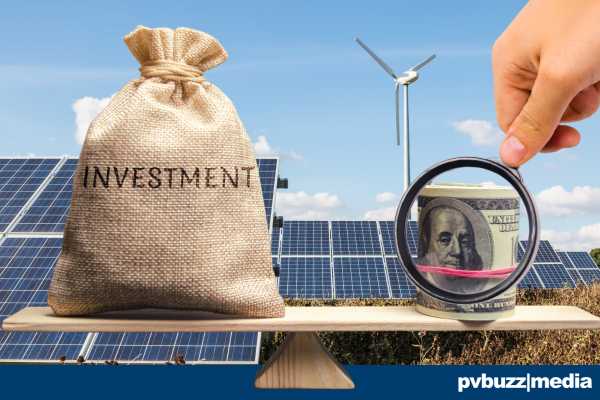- Massive investor interest in AI is driven primarily by speculation rather than actual technological advancements.
- Despite AI's potential, there is a growing concern about market saturation and the diversion of resources away from critical areas like clean technology.
- Renewable energy companies may have been overshadowed this year but still present attractive investment opportunities.
Artificial intelligence (AI) has rapidly captured the attention of investors, consumers, and the media, with speculation of the technology’s potential promises and pitfalls running rampant.
Predictions vary wildly, ranging from tech-optimist-inspired utopias to the end of contemporary labour markets as we know it. One thing is certain, however, and that’s the continued growth of AI and machine learning applications in just about everything — including cleantech.
In the near term, experts remain divided on the real-world capabilities of AI, though this hasn’t stopped investors from pouring money into it, even as they’ve pulled the plug on other ‘big ticket,’ up-and-coming technologies like autonomous vehicle trucking. Bucking today’s more challenging macroeconomic conditions, many AI startups have achieved astonishing valuations, driven primarily by investor fervour.
The good fortune may not last, as significant product and service duplication exists across the industry (I’m looking at you, Chatbot “innovation”).
Increased market saturation and growing signs of consumer wariness are also spurring concerns that the AI boom was premature — and that it may even be diverting resources away from otherwise under-allocated sectors, chiefly renewable energy.
Short-Term Propulsion

Machine learning is a branch of artificial intelligence (AI) and computer science which focuses on the use of data and algorithms to imitate the way that humans learn, gradually improving its accuracy. (IBM)
Much of the force behind today’s AI boom comes from venture capitalists trying to make a quick buck, as opposed to real technological breakthroughs.
That’s not to say that AI won’t eventually lead to incredible advances in everything from medicine to engineering — it most certainly will — but rather investors are getting ahead of the technology’s substance as it stands today.
Hugging Face, for example, is an open-source AI platform valued at over $4 billion, more than 100x its revenue. Then there’s Mistral, a model builder that at just four weeks old raised the largest seed round in Europe’s history. Character AI, which specializes in “fully customizable” chatbot personas (who doesn’t want to talk to AI Albert Einstein?) is valued at over $1 billion.
Private AI investment is on track to hit $200 billion by the end of 2025, yet if current industry trends remain, much of it will be wasted on technological redundancies that provide little long-term economic or societal value. Now consider this: for the world to align with the Paris Climate Accord and avoid the worst impacts of climate change, global spending on renewables needs to hit $2.8 trillion by the early 2030s — more than triple what was allocated in 2022.
A Difficult Year for Renewables
While investors have rolled out the red carpet for AI startups in 2023, renewable energy companies — including industry giants — have struggled. The S&P 500 Global Clean Energy Index, which represents 100 of the most prominent solar, wind, and other cleantech companies, has tumbled more than 20% this year.
Flagship brands including Enphase Energy, Sunrun, Canadian Solar, NextEra Energy, and SolarEdge have seen sharp double-digit declines in their stock value, hammered away by high interest rates and bearish market sentiment. A handful of institutional investors have even opted to short several of these clean energy stocks, adding further to industry turmoil.
Despite this, renewable energy stocks look to have found their floor in recent weeks. As many of them remain solid picks with attractive fundamentals, 2023’s punitive market correction offers a lucrative entry point for investors.
Today’s AI ‘hype’ is unlikely to hold as concerns of a speculative bubble grow. Renewable energy and other cleantech companies, on the other hand, have nowhere to go but up as the energy transition continues to swing into full force.
For the sake of future returns and the environment, investors should take a hard look at how they’re employing their capital.












Comments